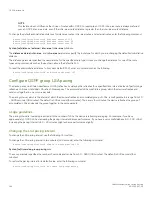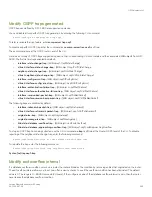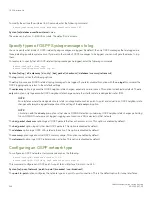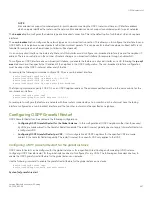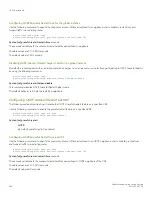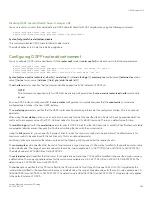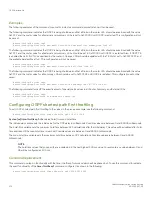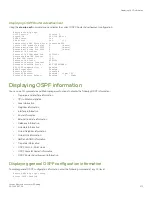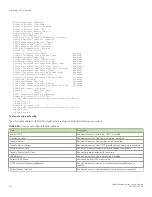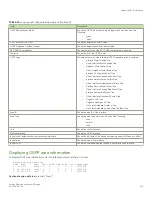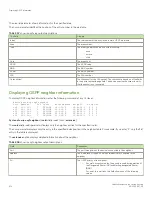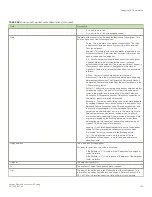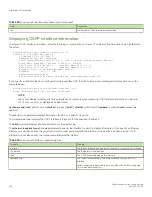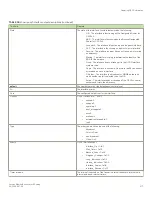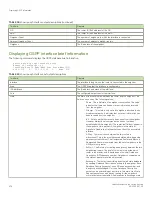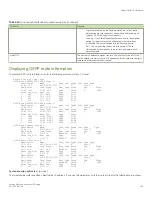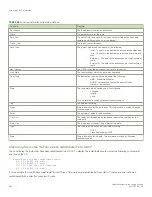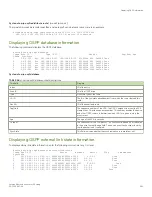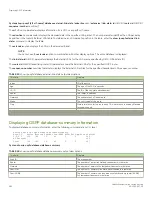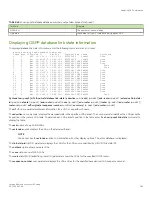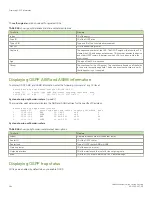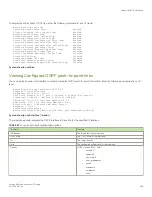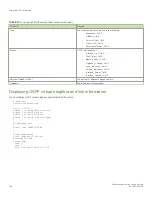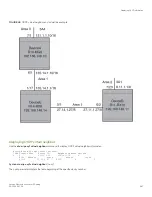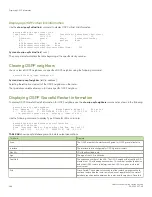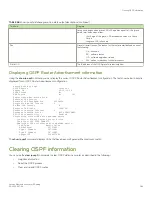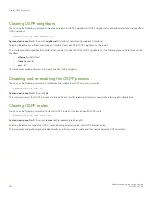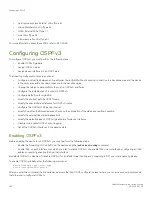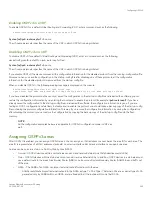
TABLE 59
show ip ospf interface output descriptions (continued)
This field
Displays
DR
The router ID (IPv4 address) of the DR.
BDR
The router ID (IPv4 address) of the BDR.
Neighbor Count
The number of neighbors to which the interface is connected.
Adjacent Neighbor Count
The number of adjacent neighbor routers.
Neighbor:
The IP address of the neighbor.
Displaying OSPF interface brief information
The following command displays the OSPF database brief information.
device# show ip ospf interface brief
Number of Interfaces is 1
Interface Area IP Addr/Mask Cost State Nbrs(F/C)
eth 1/1/2 0 10.1.1.2/24 1 down 0/0
TABLE 60
show ip ospf interface brief output descriptions
This field
Displays
Interface
The interface through which the router is connected to the neighbor.
Area
The OSPF Area that the interface is configured in.
IP Addr/Mask
The IP address and mask of the interface.
Cost
The configured output cost for the interface.
State
The state of the conversation between the router and the neighbor. This
field can have one of the following values:
•
Down - The initial state of a neighbor conversation. This value
indicates that there has been no recent information received
from the neighbor.
•
Attempt - This state is only valid for neighbors attached to non-
broadcast networks. It indicates that no recent information has
been received from the neighbor.
•
Init - A Hello packet has recently been seen from the neighbor.
However, bidirectional communication has not yet been
established with the neighbor. (The router itself did not appear in
the neighbor's Hello packet.) All neighbors in this state (or
higher) are listed in the Hello packets sent from the associated
interface.
•
2-Way - Communication between the two routers is
bidirectional. This is the most advanced state before beginning
adjacency establishment. The Designated Router and Backup
Designated Router are selected from the set of neighbors in the
2-Way state or greater.
•
ExStart - The first step in creating an adjacency between the two
neighboring routers. The goal of this step is to decide which
router is the master, and to decide upon the initial Database
Description (DD) sequence number. Neighbor conversations in
this state or greater are called adjacencies.
•
Exchange - The router is describing its entire link state database
by sending Database Description packets to the neighbor. Each
Database Description packet has a DD sequence number, and
is explicitly acknowledged. Only one Database Description
packet can be outstanding at any time. In this state, Link State
Request packets can also be sent asking for the neighbor's
more recent advertisements. All adjacencies in Exchange state
Displaying OSPF information
FastIron Ethernet Switch Layer 3 Routing
278
53-1003627-04
Summary of Contents for FastIron SX 1600
Page 2: ...FastIron Ethernet Switch Layer 3 Routing 2 53 1003627 04 ...
Page 16: ...FastIron Ethernet Switch Layer 3 Routing 16 53 1003627 04 ...
Page 20: ...FastIron Ethernet Switch Layer 3 Routing 20 53 1003627 04 ...
Page 142: ...FastIron Ethernet Switch Layer 3 Routing 142 53 1003627 04 ...
Page 150: ...FastIron Ethernet Switch Layer 3 Routing 150 53 1003627 04 ...
Page 200: ...FastIron Ethernet Switch Layer 3 Routing 200 53 1003627 04 ...
Page 214: ...FastIron Ethernet Switch Layer 3 Routing 214 53 1003627 04 ...
Page 350: ...FastIron Ethernet Switch Layer 3 Routing 350 53 1003627 04 ...
Page 476: ...FastIron Ethernet Switch Layer 3 Routing 476 53 1003627 04 ...
Page 588: ...FastIron Ethernet Switch Layer 3 Routing 588 53 1003627 04 ...

